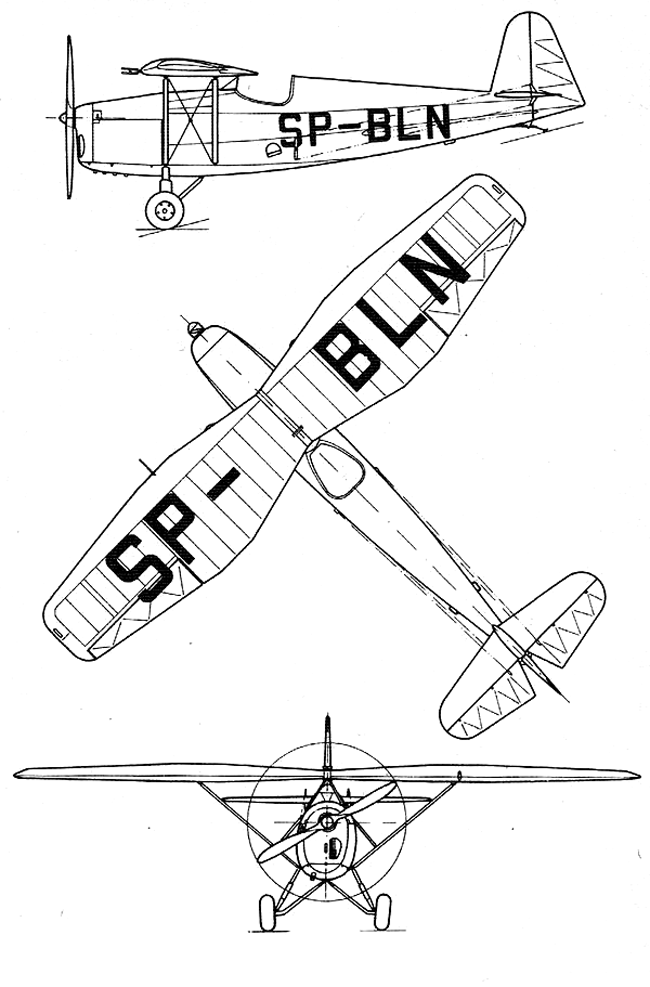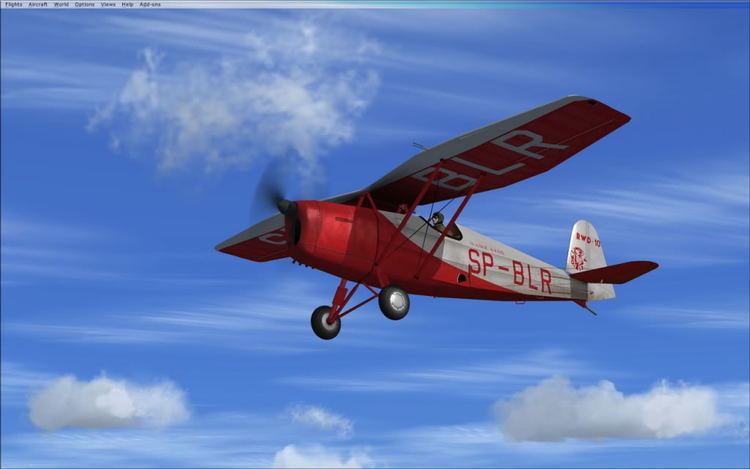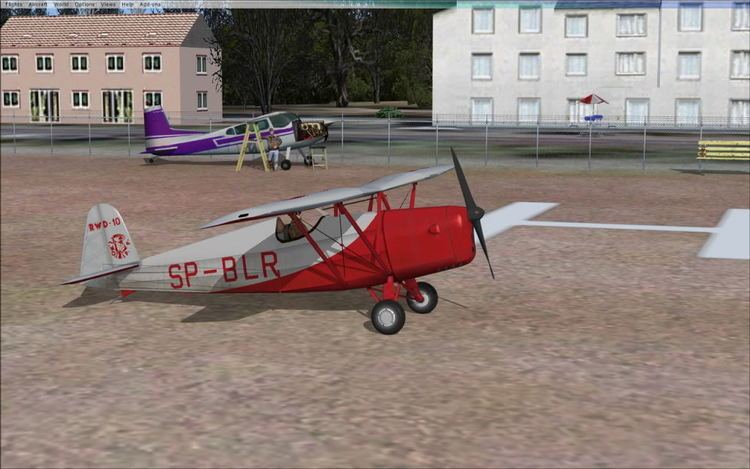Top speed 218 km/h Length 6.2 m | Wingspan 7.49 m First flight July 1933 | |
 | ||
Manufacturer | ||
Rwd 10
The RWD-10 was a Polish aerobatics sports plane, single-seat parasol wing monoplane, used from 1933 to 1939 by the Polish aviation, constructed by the RWD team.
Contents

Rwd 10 model na uwi zi odpalanie silnika
Development

The aircraft was designed as a single-seater aerobatic sports plane, that could also be used as a trainer for fighter aircraft pilots. The main designer was Jerzy Drzewiecki of the RWD construction team in the DWL (Doświadczalne Warsztaty Lotnicze) workshops. Its silhouette was similar to the RWD-8. The first prototype (registration SP-ALC), was flown in July 1933 by Drzewiecki. Its stability was not satisfactory, but after modifications, including lengthening a fuselage, it appeared a successful design and it completed state trials in 1935. In a mock dogfight with the PZL P.11c fighter, the RWD-10 kept on the P.11's tail. The first public aerobatics show of the RWD-10 took place during a Gordon Bennett Cup in ballooning on September 14–15, 1935 in Warsaw.

In 1936, a series of 20 aircraft was ordered by the LOPP paramilitary organization, funded by a public collection for aviation development. They were built in 1937 and then distributed among the Polish regional aero clubs - most (5) for Warsaw Aero Club. In 1938, another two were built. In total, approximately 22 serial RWD-10s were produced.
Three aircraft were crashed before the war, the rest were probably destroyed during the Invasion of Poland in 1939.
Description

Mixed construction single-engine single-seat braced high-wing (parasol wing) monoplane, conventional in layout. Fuselage of a steel frame, covered with canvas on a wooden frame, in aluminum in engine section. Straight double-trapezoid two-part wing, of wooden construction, covered with canvas and plywood in front, two-spar. The wing was supported by a central pyramid and twin struts. Wooden construction cantilever empennage, covered with plywood (stabilizers) and canvas (rudder and elevators). A pilot in an open cockpit, had a windshield. Conventional fixed landing gear, with a rear skid. Four-cylinder air-cooled inverted straight engine PZInż. Junior (licence built Walter Junior) with 82 kW (110 hp) nominal power and 90 kW (120 hp) take-off power. Two-blade wooden propeller Szomański, of a fixed pitch. Fuel tank in the fuselage: 54 l (fuel consumption 25 l/h).
Specifications (RWD-10)
Data from Glass, A. (1977)
General characteristics
Performance
